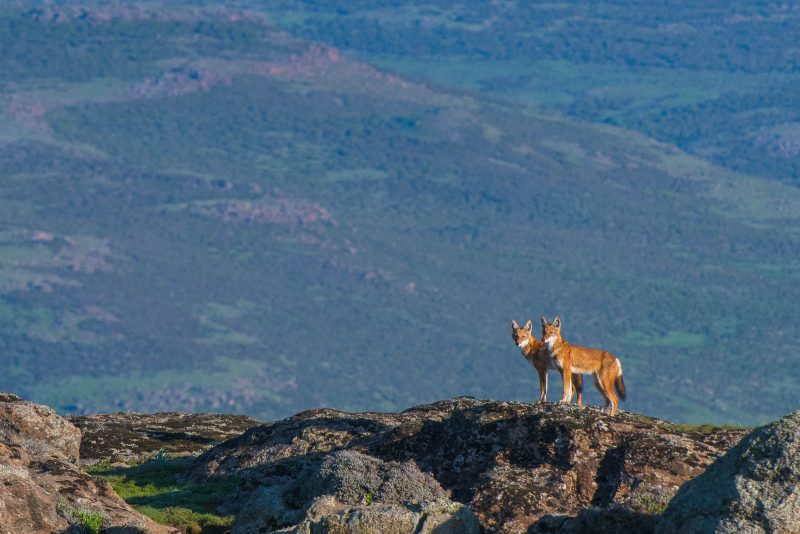Ethiopian Wolves: Photographing the Rarest Canine in the World

Ethiopia is a relatively overlooked country amongst the wildlife photography community. Whilst it’s home to many of Africa’s “typical” safari animals, I was in pursuit of its more elusive creatures back in May 2018.
Seeking sanctuary at the top of Ethiopia’s mountain ranges, the Ethiopian wolf now numbers at only 500 individuals and is found nowhere else on the planet. Despite a dainty fox-like appearance, they are more closely related to grey wolves than they are to our familiar red foxes. The Ethiopian wolf’s ancestors were once found over a far wider area than they are today, back when Africa was colder and their favoured afro-alpine habitat was more common. As East Africa warmed up, they were forced up Ethiopia’s towering peaks, where they can now be found on the high plateaus. Here they’ve now specialised to feed on high-altitude rodents and, whilst still social pack animals, they split off during the day to hunt rats individually.



However, all is not well for Ethiopian wolves. Rabies and canine distemper plague is decimating what’s left of the 500 wolves, broken up into many isolated populations across the country. With Ethiopia’s growing human population, more and more people are pushed up into the mountains, bringing their dogs with them. The diseases are an epidemic in Ethiopia, and so they are frequently transferred to the wolves by wandering domestic dogs.
Working with Biome Productions, I co-produced a ground-breaking Virtual Reality (360°) stereoscopic film for The Born Free Foundation, looking to use this exciting new medium to share the story and raise awareness of the greatest threats to these unique animals. One of my duties was to be the film’s official photographer, documenting the shoot for promotional purposes on its release.
Our four-man-strong production team set off on the arduous journey to the Bale Mountains, a 10 hour drive through rural Ethiopia. Across this transect, the stats I’d seen of the country’s enormous population growth became reality. However, eventually we caught our first glimpse of the mountains and the excitement immediately began to set in. We saw our first wolf surprisingly quickly, along with hundreds of rats running for cover, massive lammergeiers flying overhead, and bizarre lobelias (a flowering plant) growing around us. The Bale Mountains truly is an extraordinary place.
Based in a camp at the top of a small glacial valley 3,600m up, home comforts weren’t an option. Half of the team’s tent bedding was ridden with bed bugs, a hole in the ground was our shared toilet, and -5°C temperatures were an almost nightly occurrence. But, being in such a beautiful landscape with Africa’s rarest carnivore, these realities were quickly overlooked.

On my first drive one morning there was a frost cloaking the plateau, and the first light was just creeping over the mountains. A pack of wolves ran up to the vehicle, stopped at about 10m from the car and went through their morning rituals of grooming and licking one another before heading off individually to hunt for the day. As I was setting up our 360° camera, it was agonising not to take some photos!

As the days went on and the 360° shots began rolling in, our drives looking for wolves became more relaxed. This is when my photography of the Ethiopian wolves started to become a little more productive.



I was working on aperture priority mode at f/5.6, slightly higher than I’d usually go to boost my odds of a sharp photo, without compromising the shutter speed too much in the strong sunlight.



In conclusion
I’ve been lucky enough to go to a number of amazing places in the world, but the Bale Mountains of Ethiopia was particularly special to me. It’s such a stunning landscape, which is rarely ever visited photographers and tourists. There’s a real risk that the landscape, and its wild inhabitants, will be a thing of the past in a few decades.
I highly recommend that you visit the area yourself with a local guide. By doing this, you will support local ecotourism initiatives which can provide an alternative source of income for local people. If you can, please donate to the conservation efforts of the Ethiopian Wolf Conservation Programme: the Ethiopian’s wolf last hope.
You can watch the film I made with Biome Productions here:






